Abstract
Lysates of human erythrocytes produce pain when applied to a human blister base. The algogenic material is not potassium, acetylcholine, bradykinin, 5-hydroxytryptamine, histamine or a prostaglandin, and is dialysable. 2. Fractionation of dialysates of freshly lysed erythrocytes by Sephadex gel filtration coupled with assays on the human blister base preparation showed that the algogenic material was a mixture of the adenyl compounds adenosine triphosphate (ATP), adenosine diphosphate (ADP) and adenosine monophosphate (AMP). 3. On the human blister base preparation ATP, ADP and AMP had comparable activity and produced threshold pain in a concentration of 2 muM. 4. The rabbit isolated jejunum preparation was found useful in these studies since ATP, ADP and AMP produced a relaxation which was proportional to their concentration in test samples obtained from dialysates. Of more limited usefulness was the rat isolated stomach strip preparation on which ATP and ADP produced contractions which also were proportional to their concentrations in text samples. 5. The possible role of adenyl compounds in the production of pain in vivo is discussed.
Full text
PDF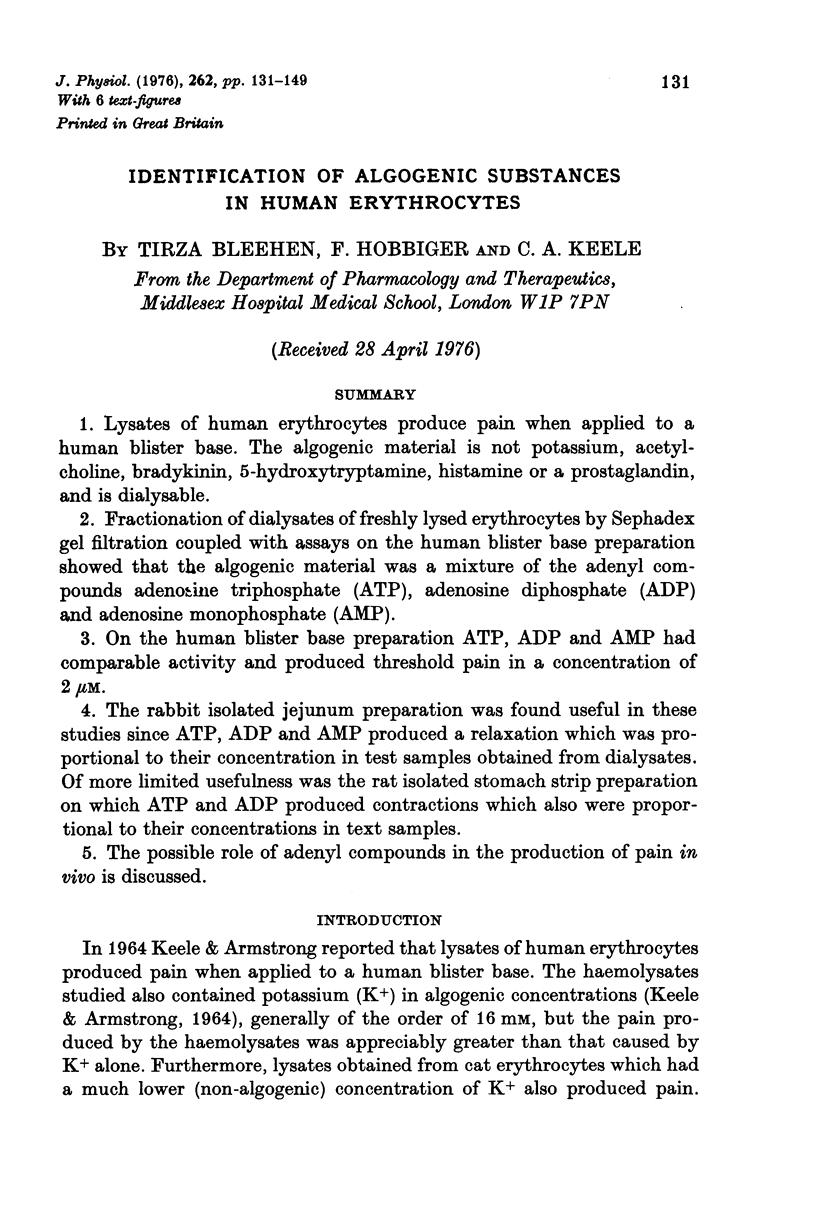
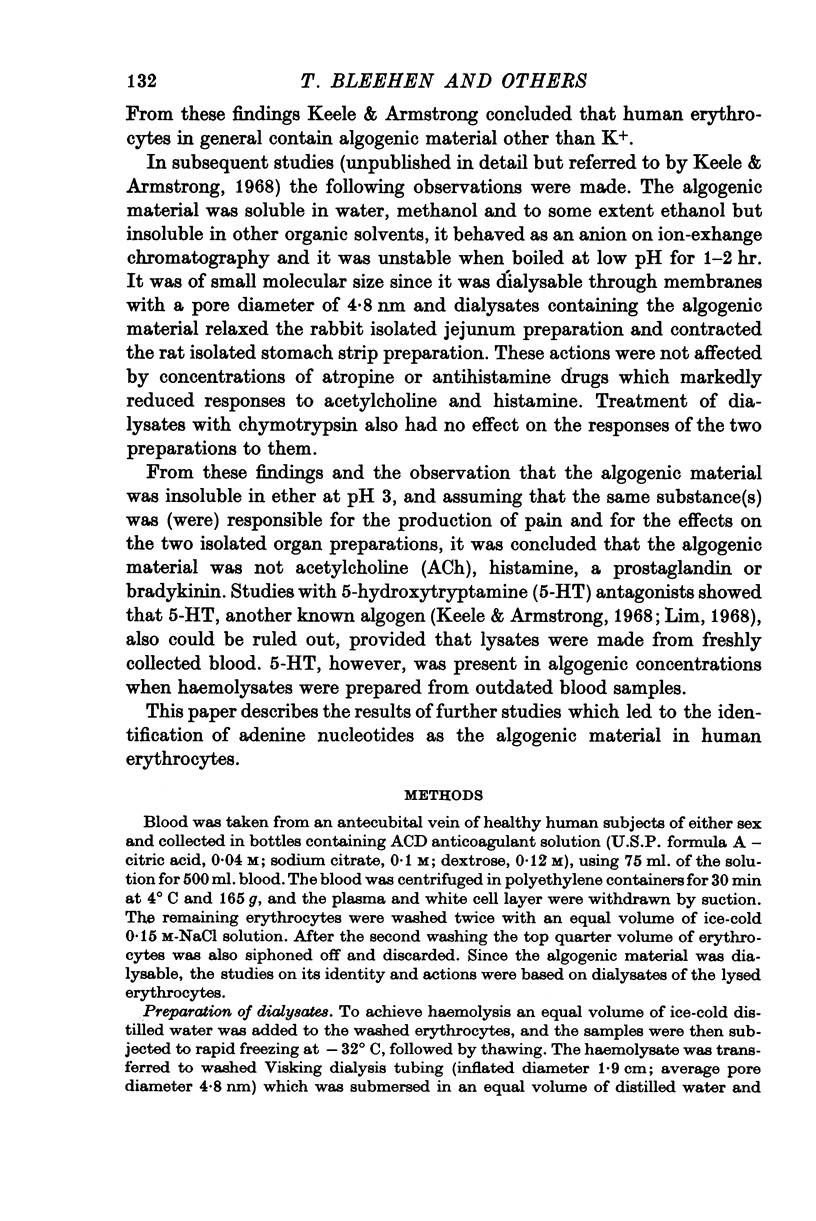
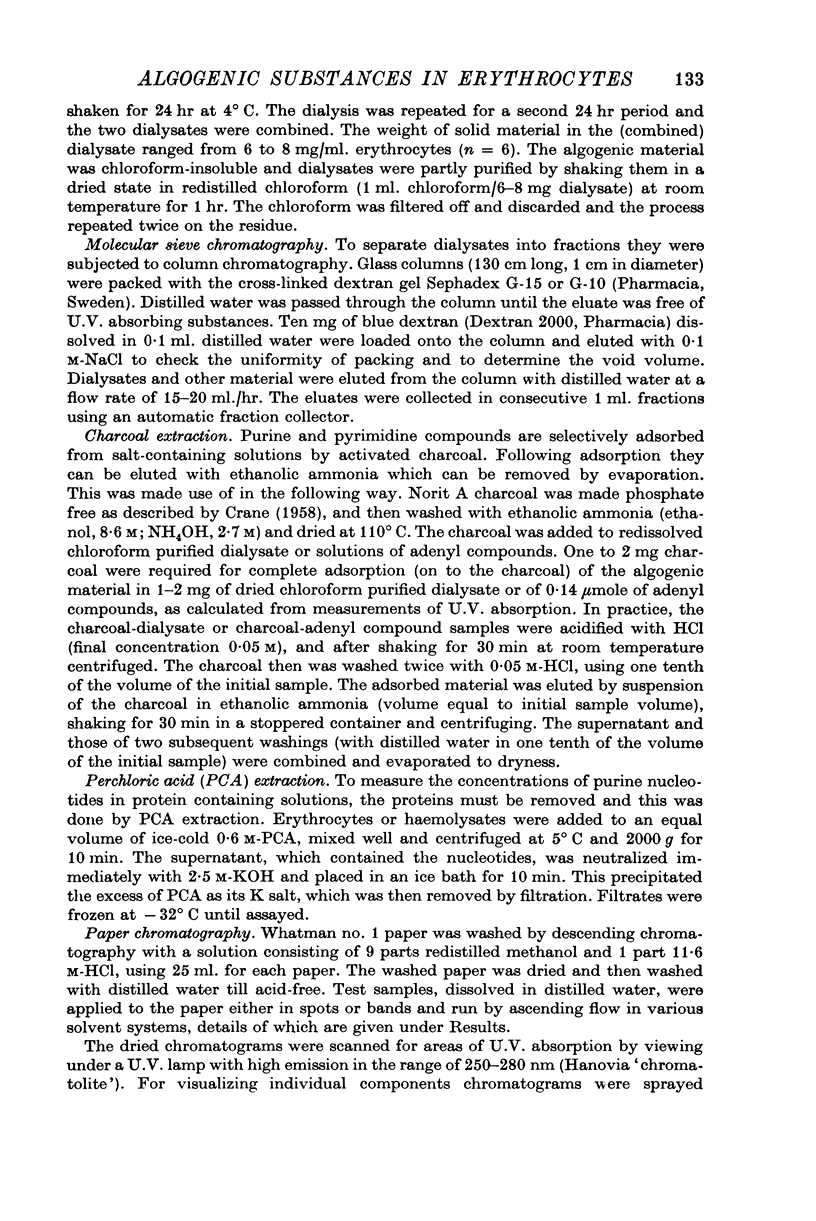
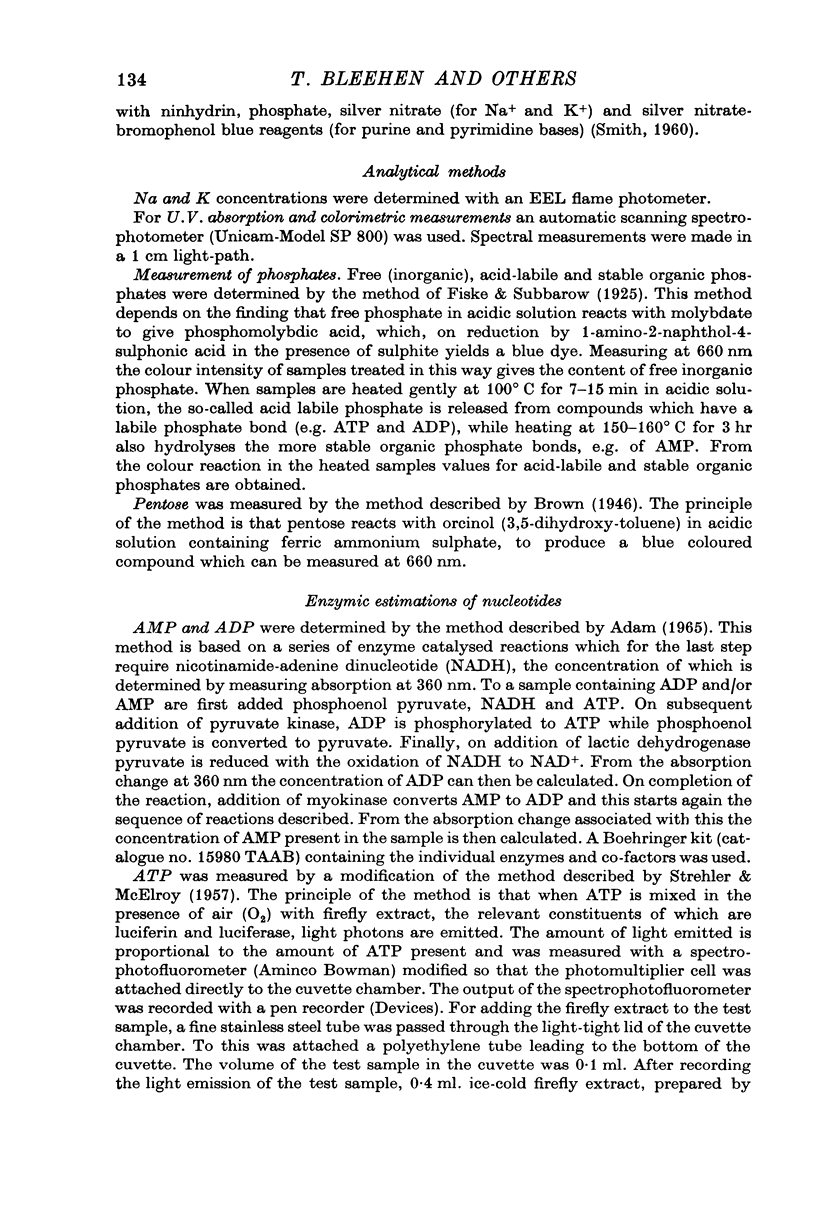
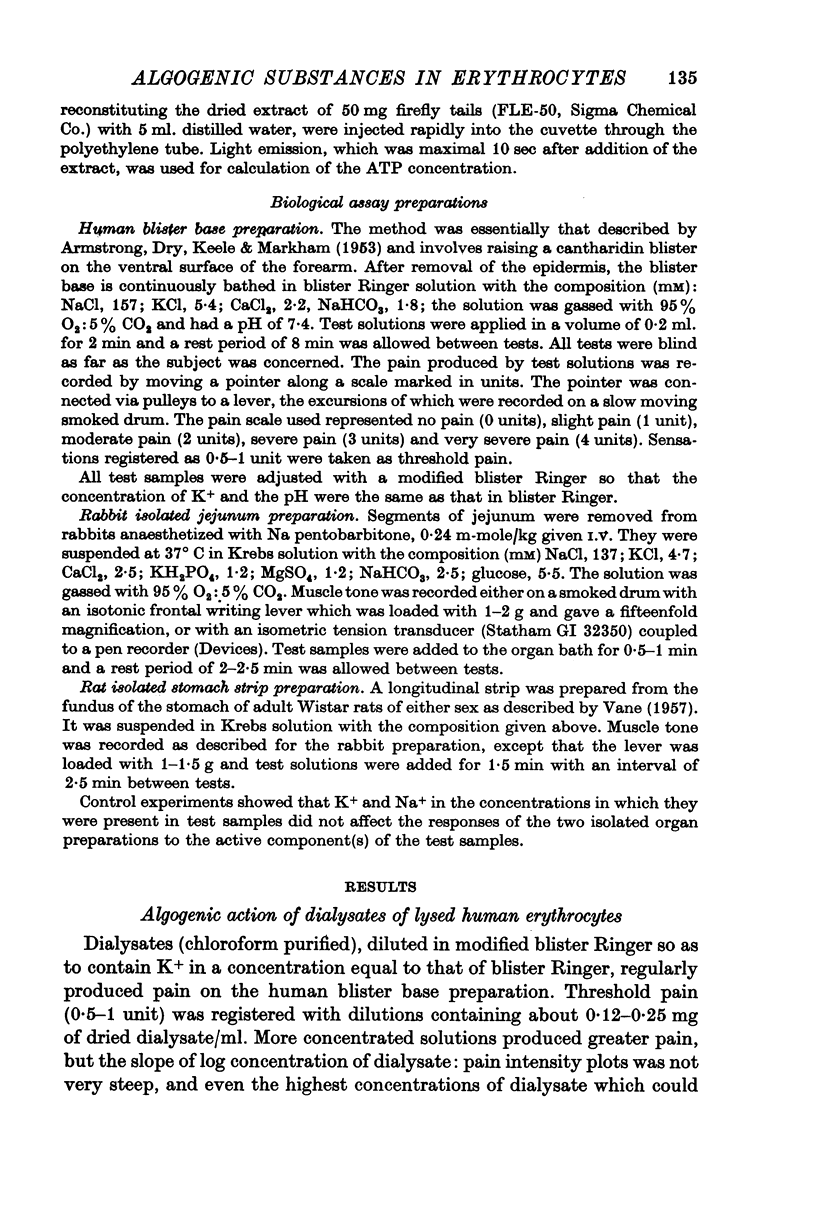
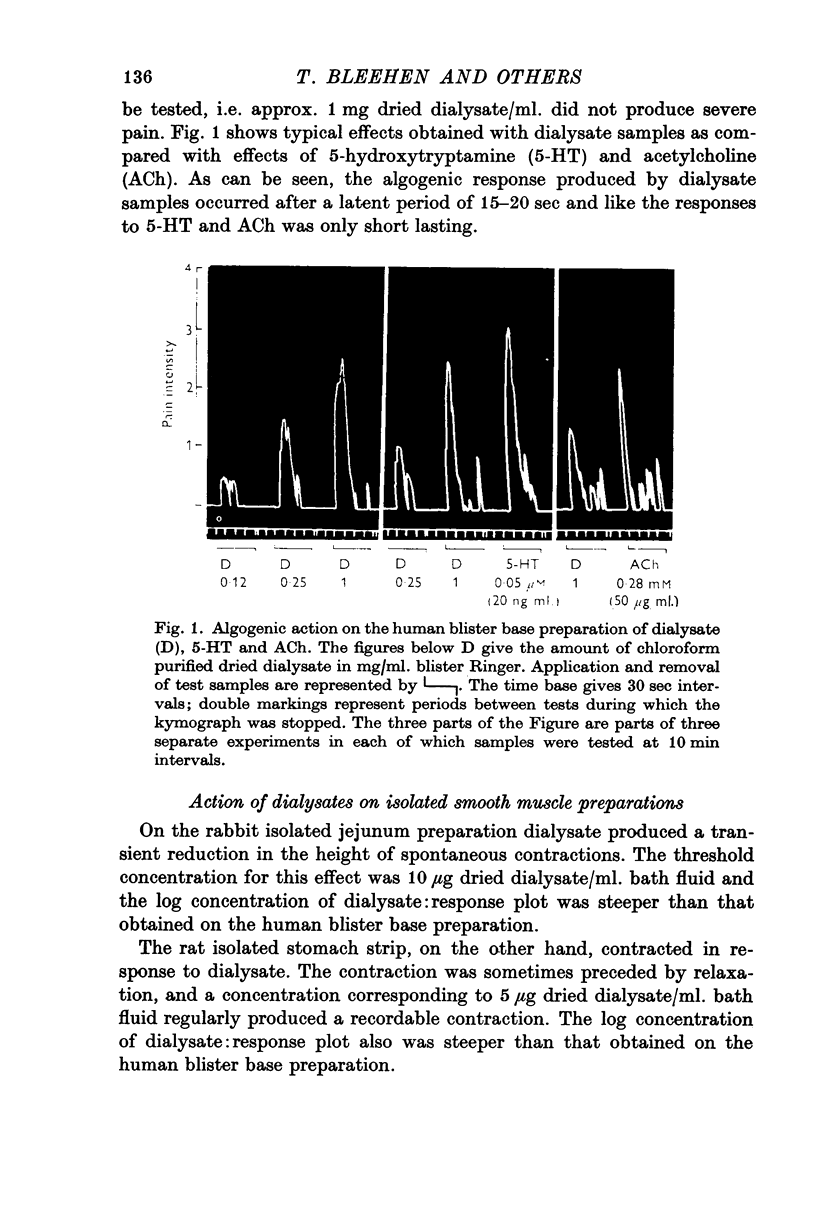
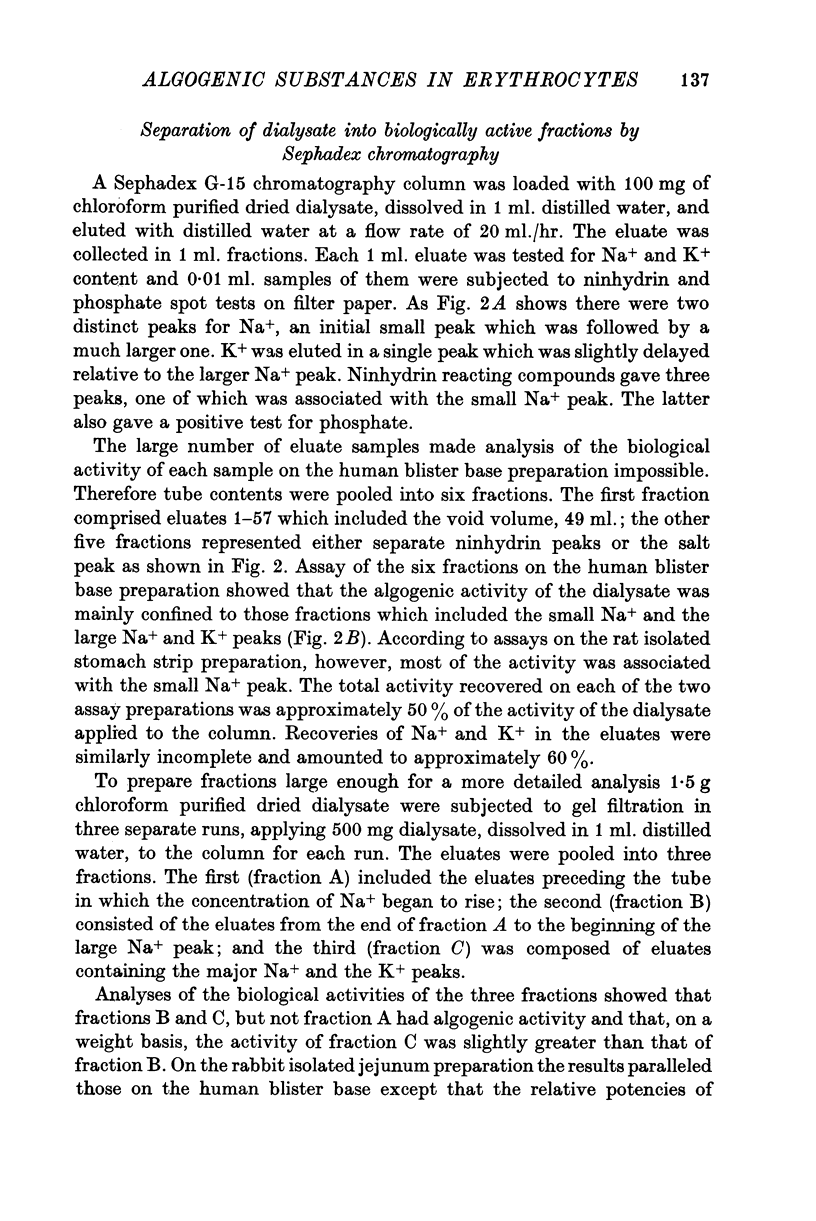
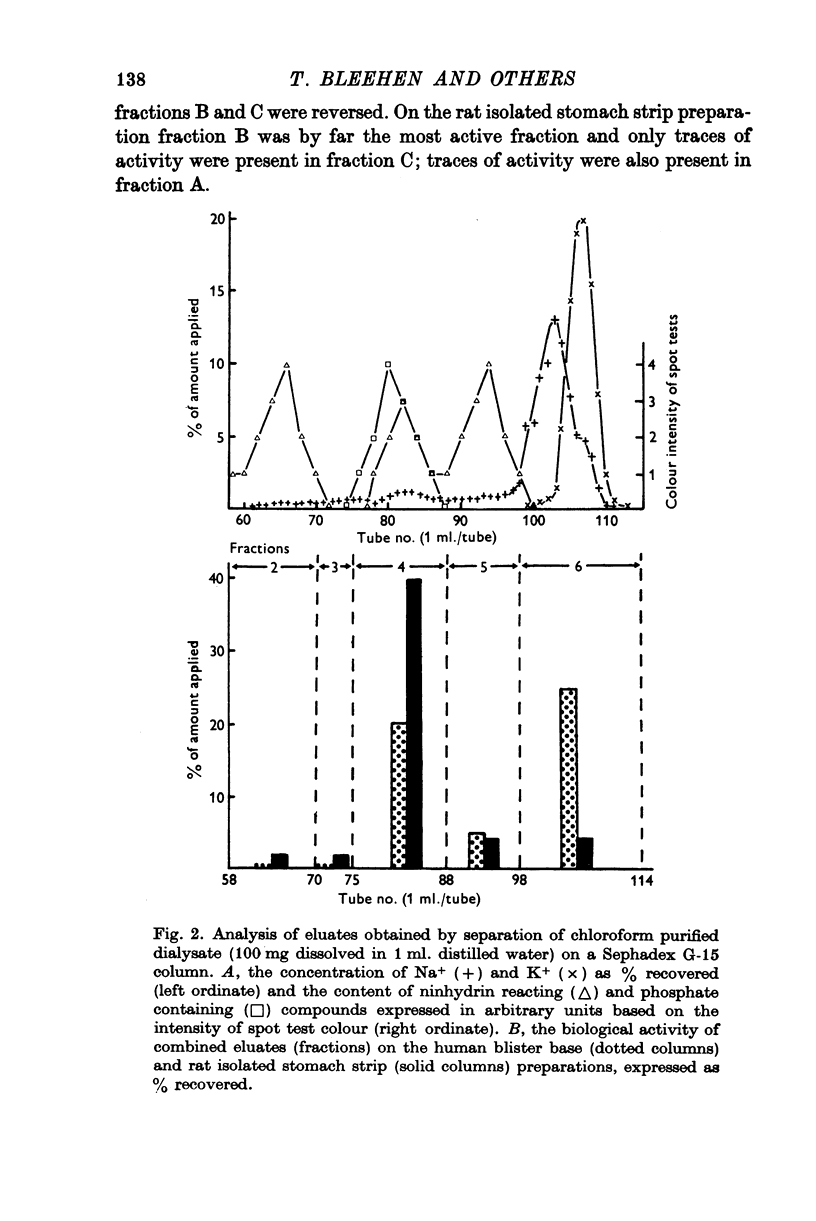
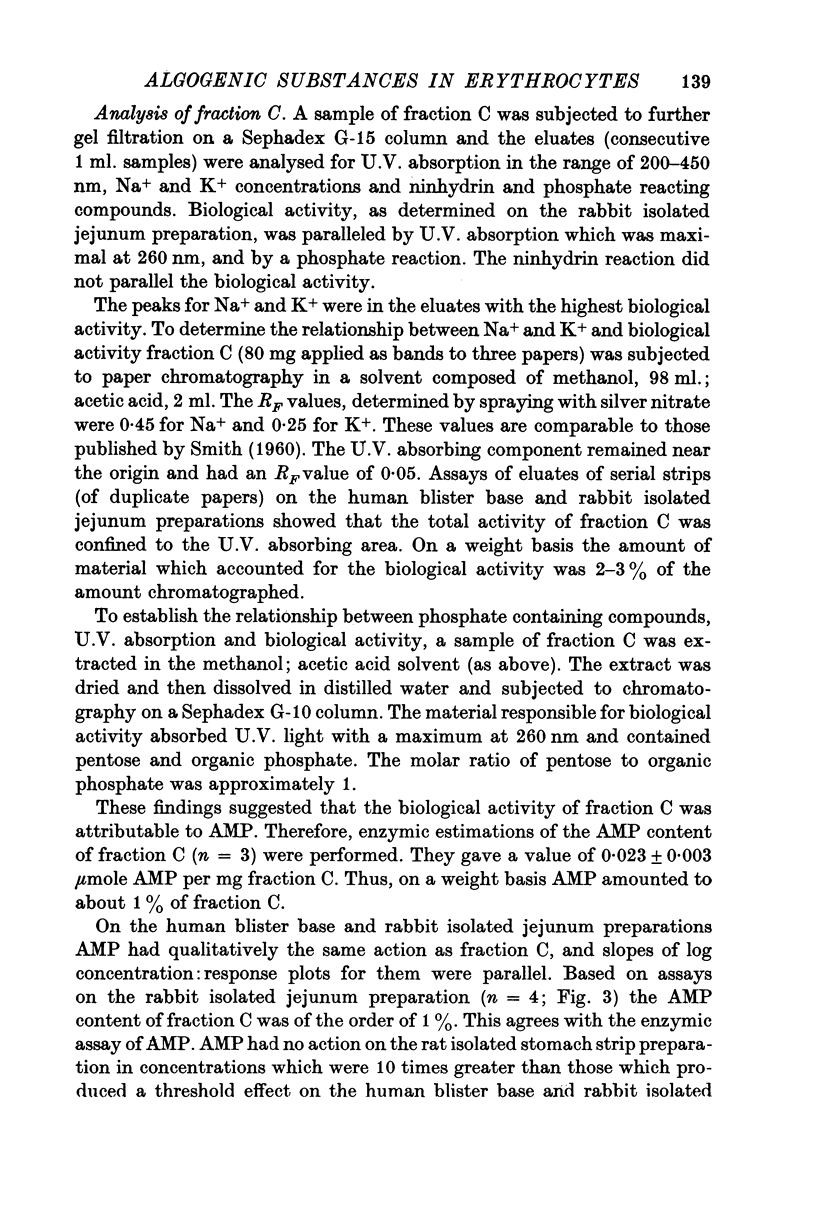
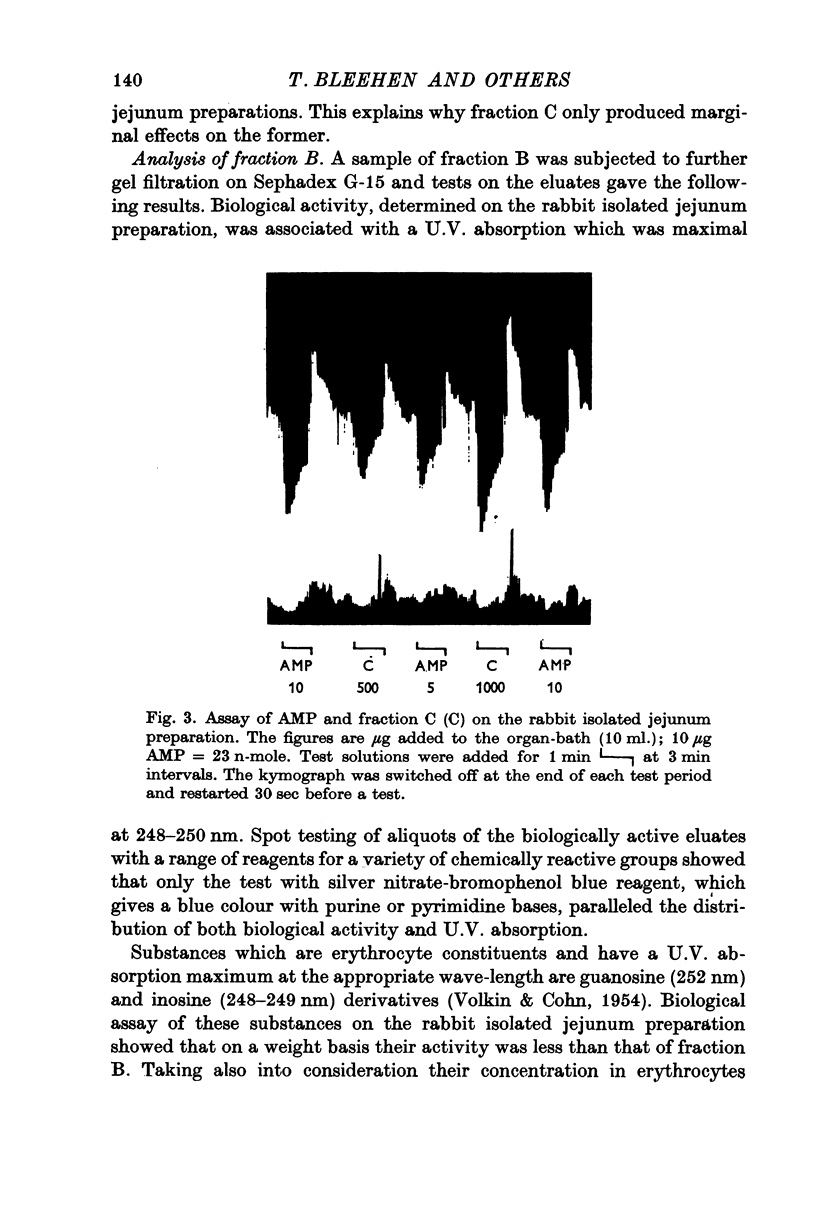
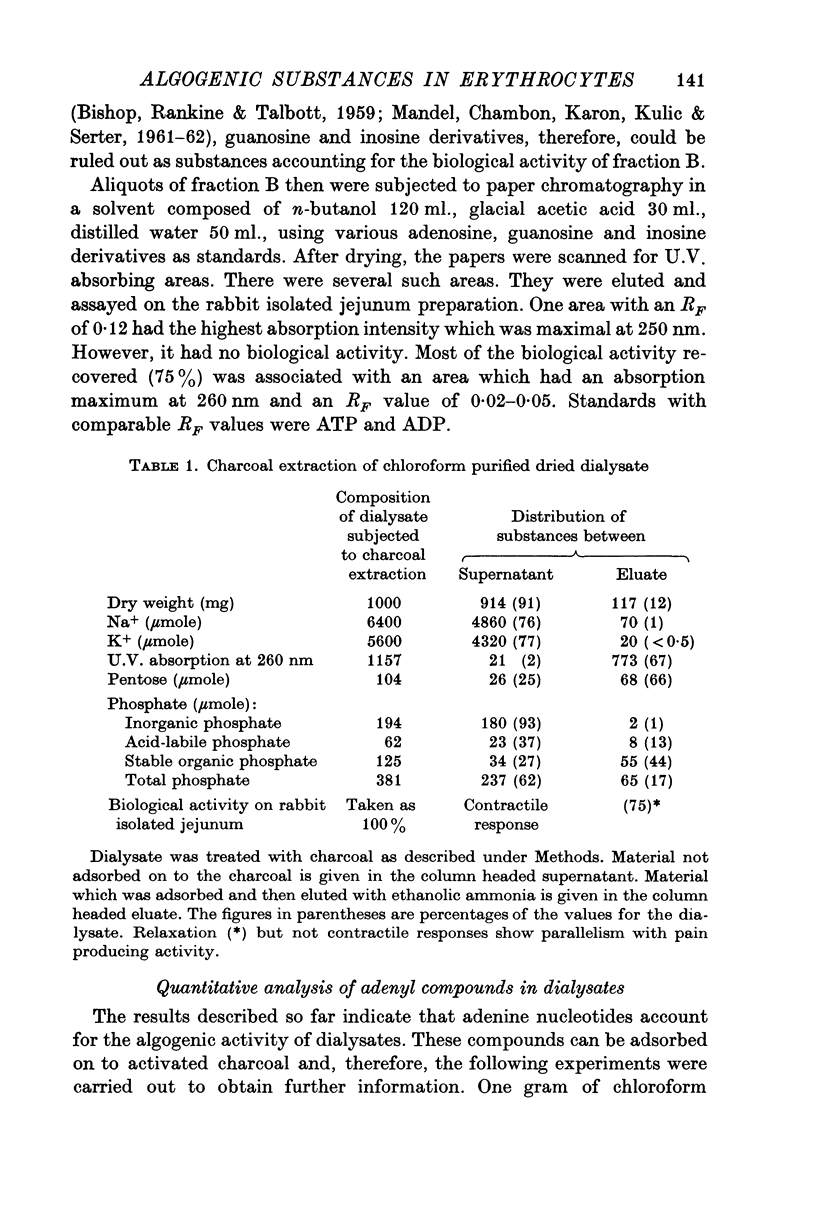
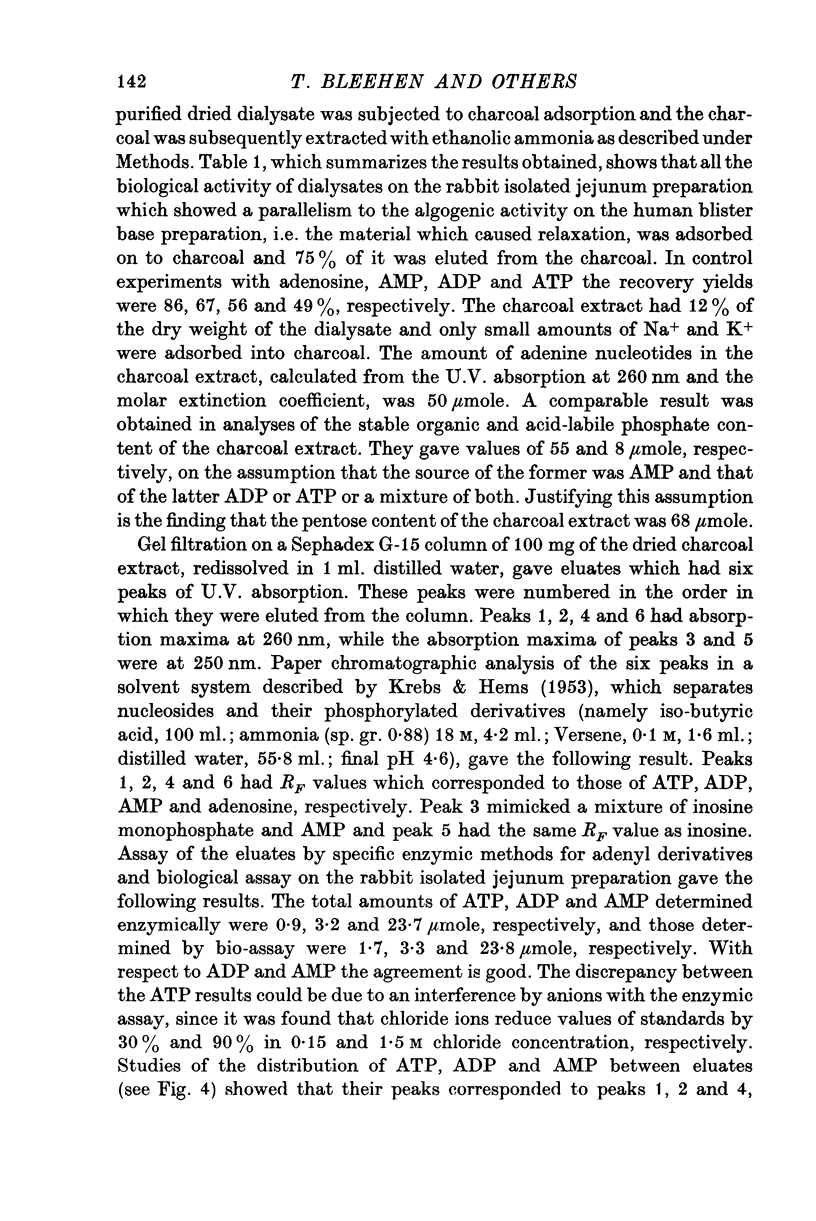
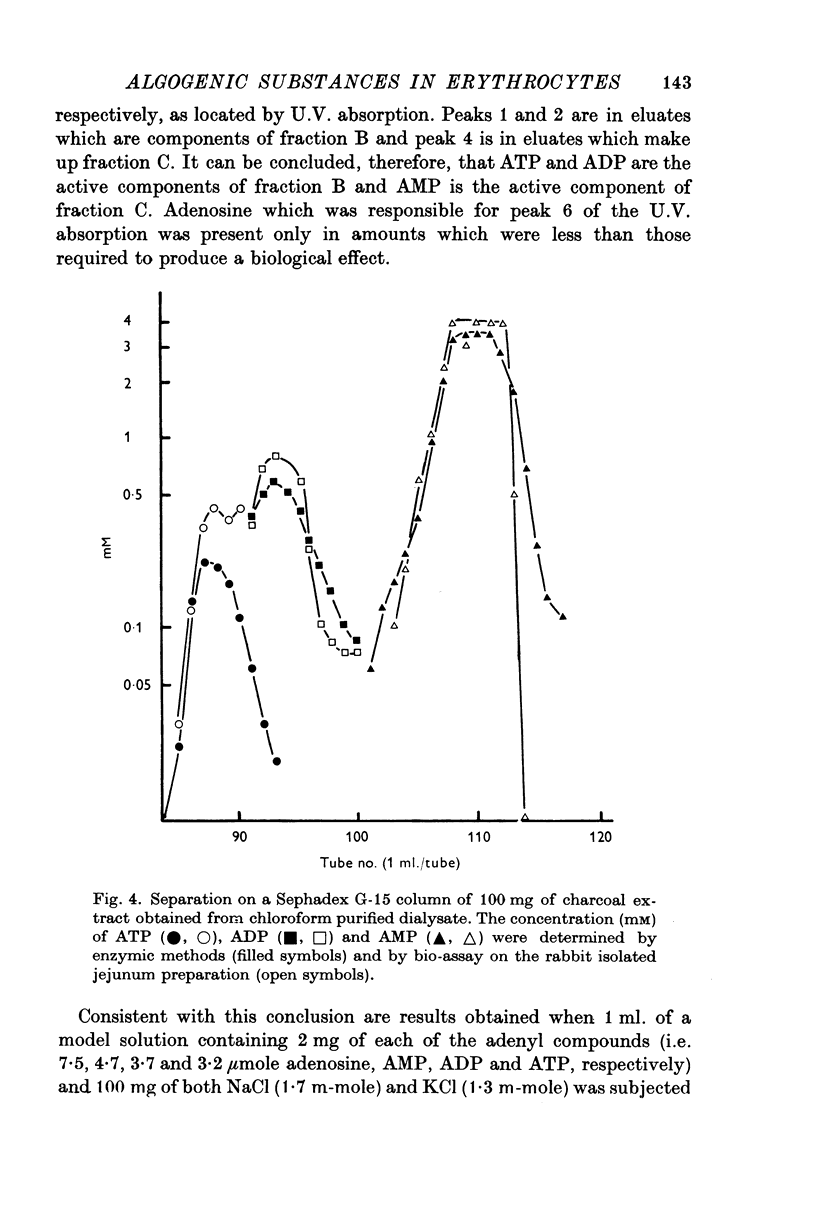
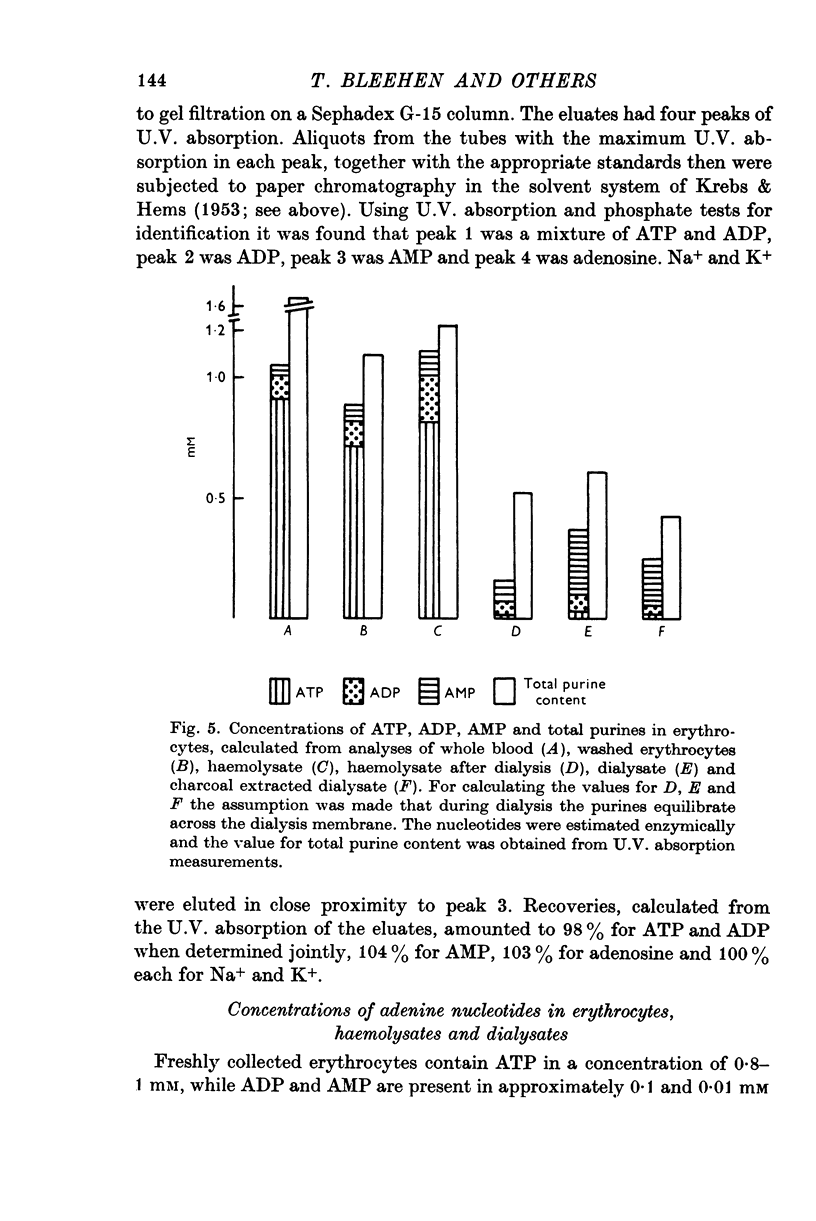
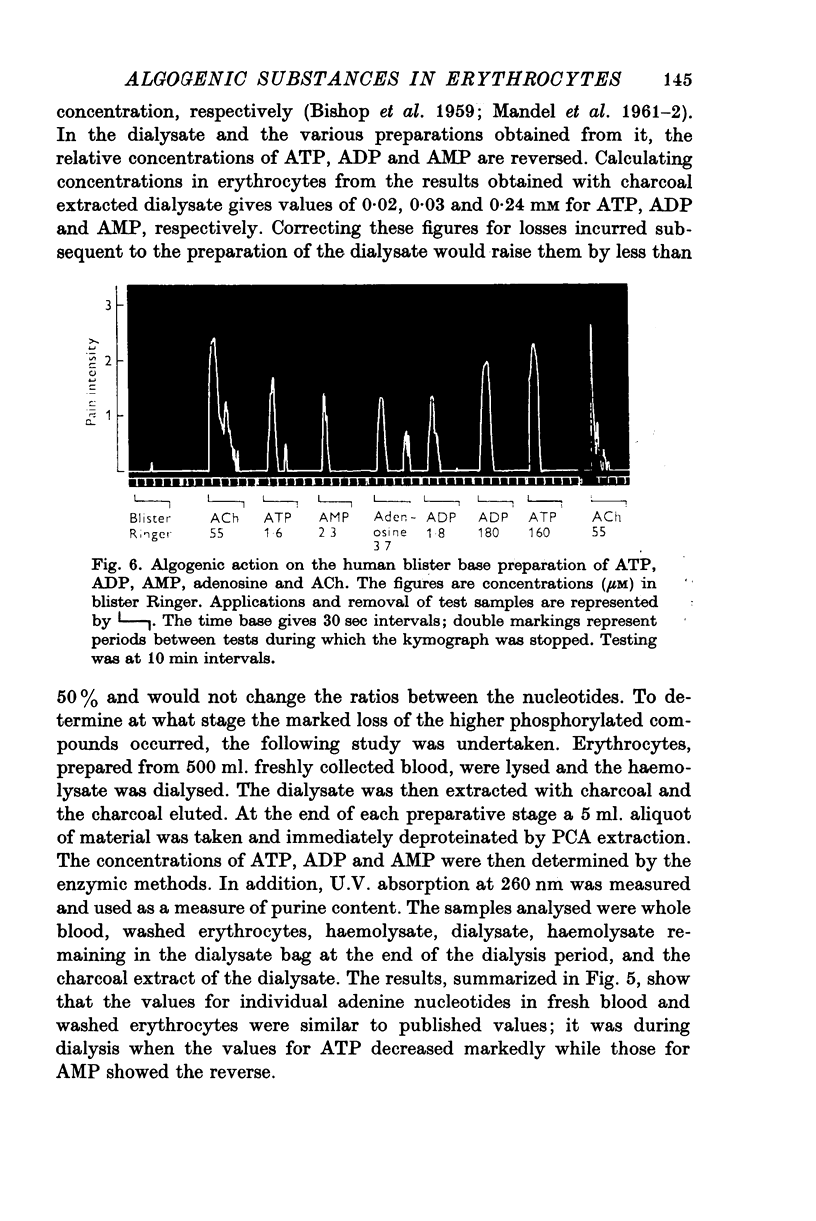
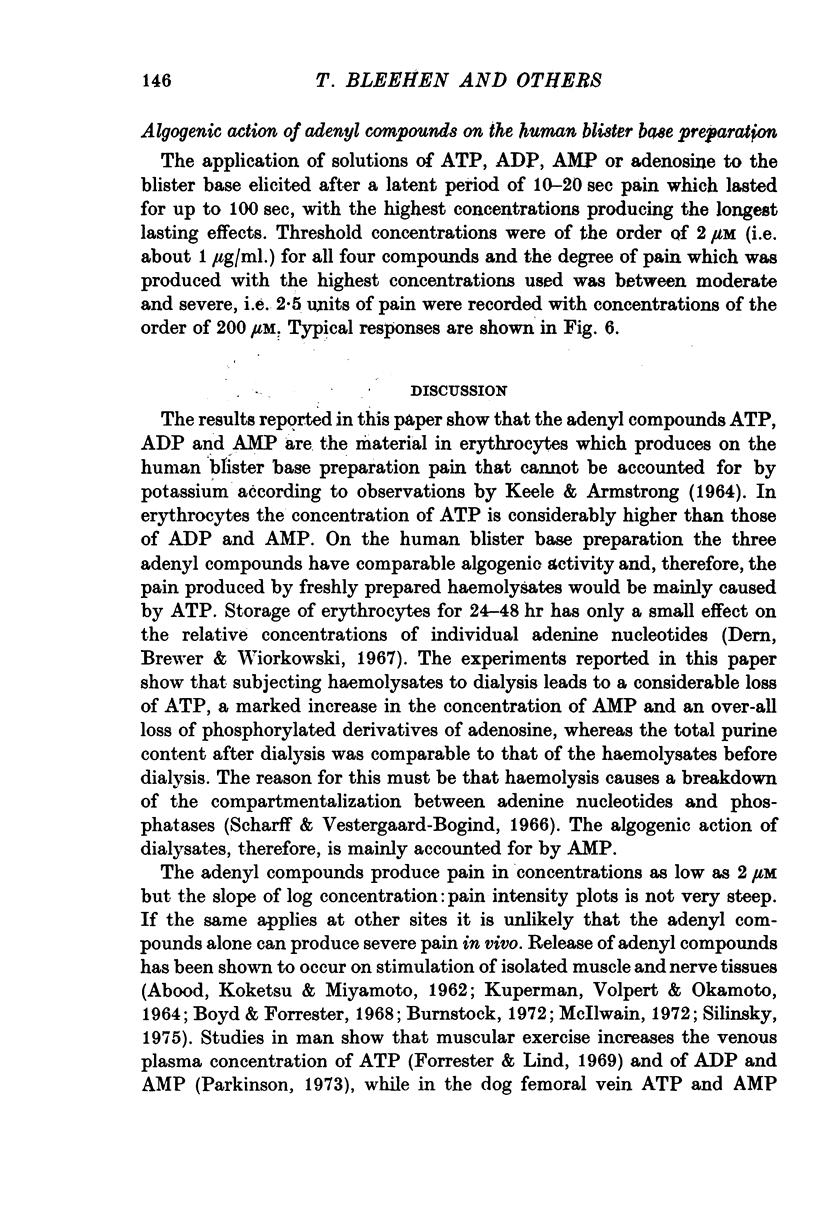
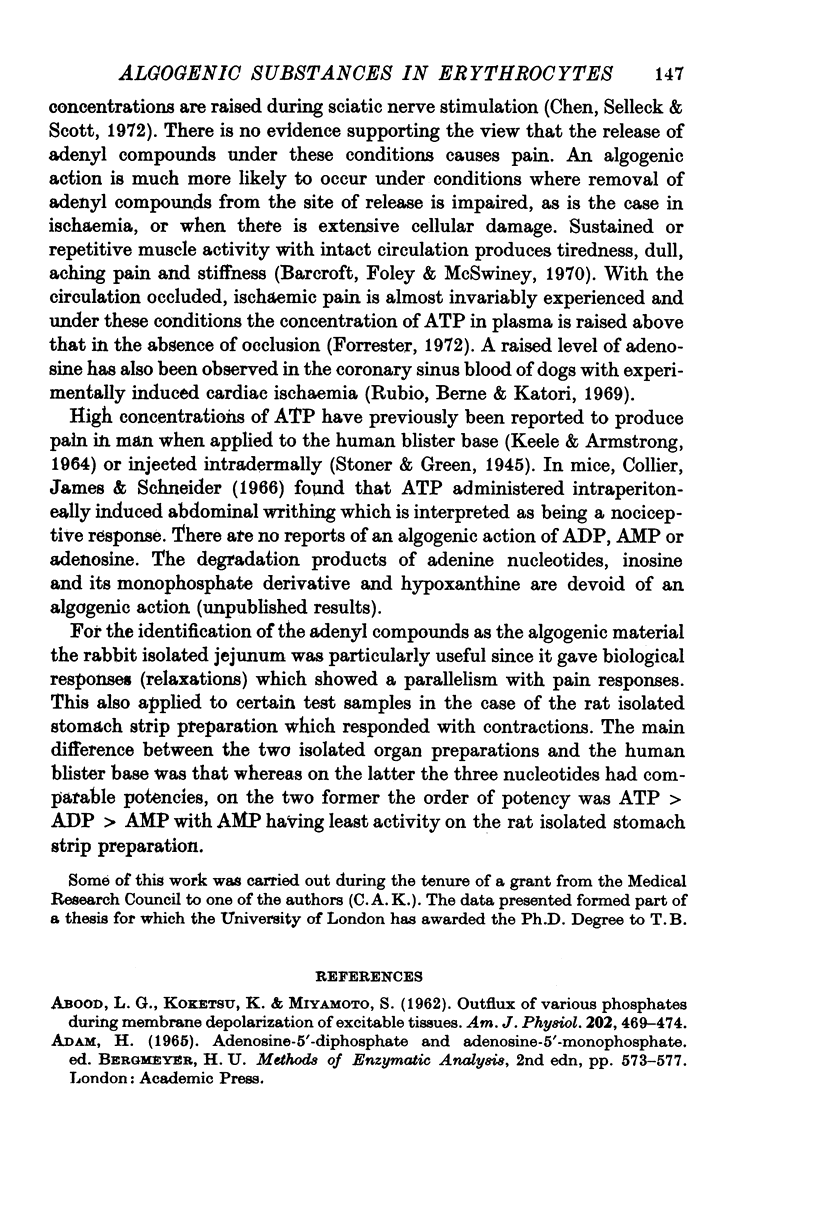
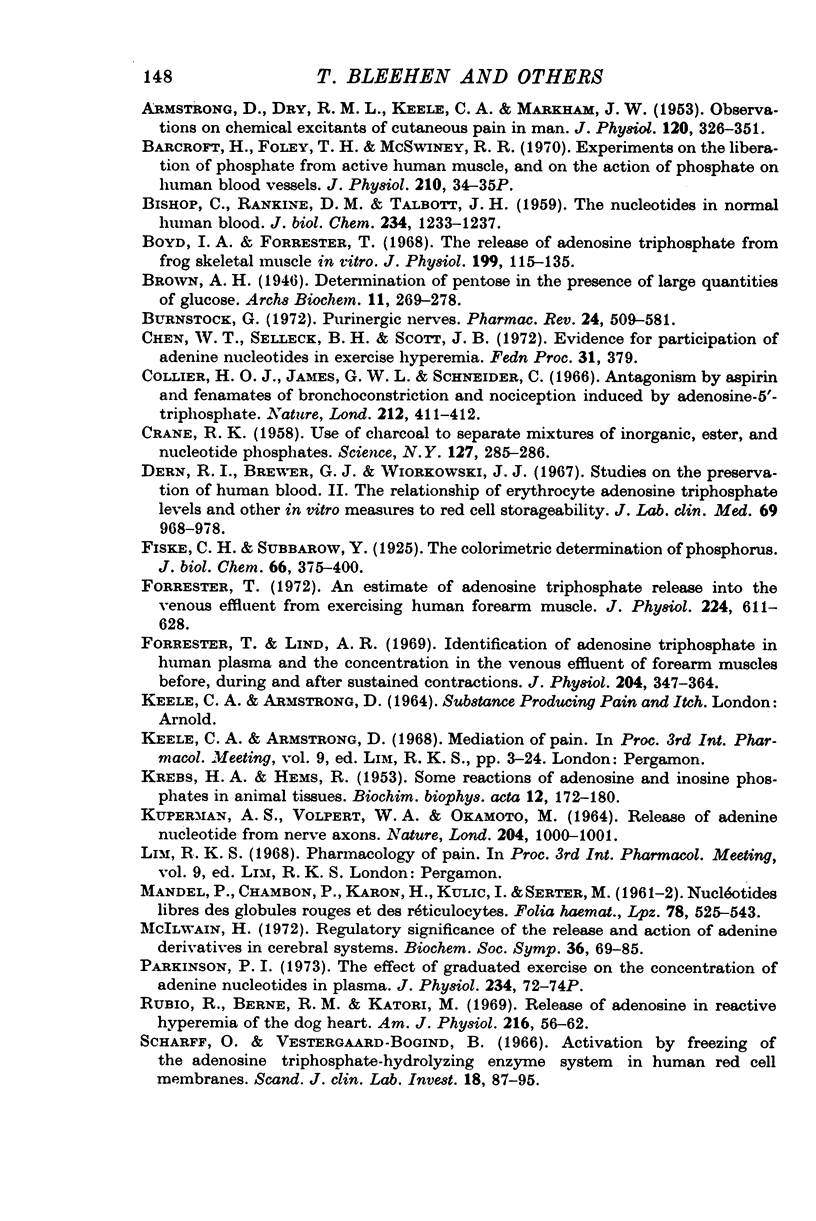
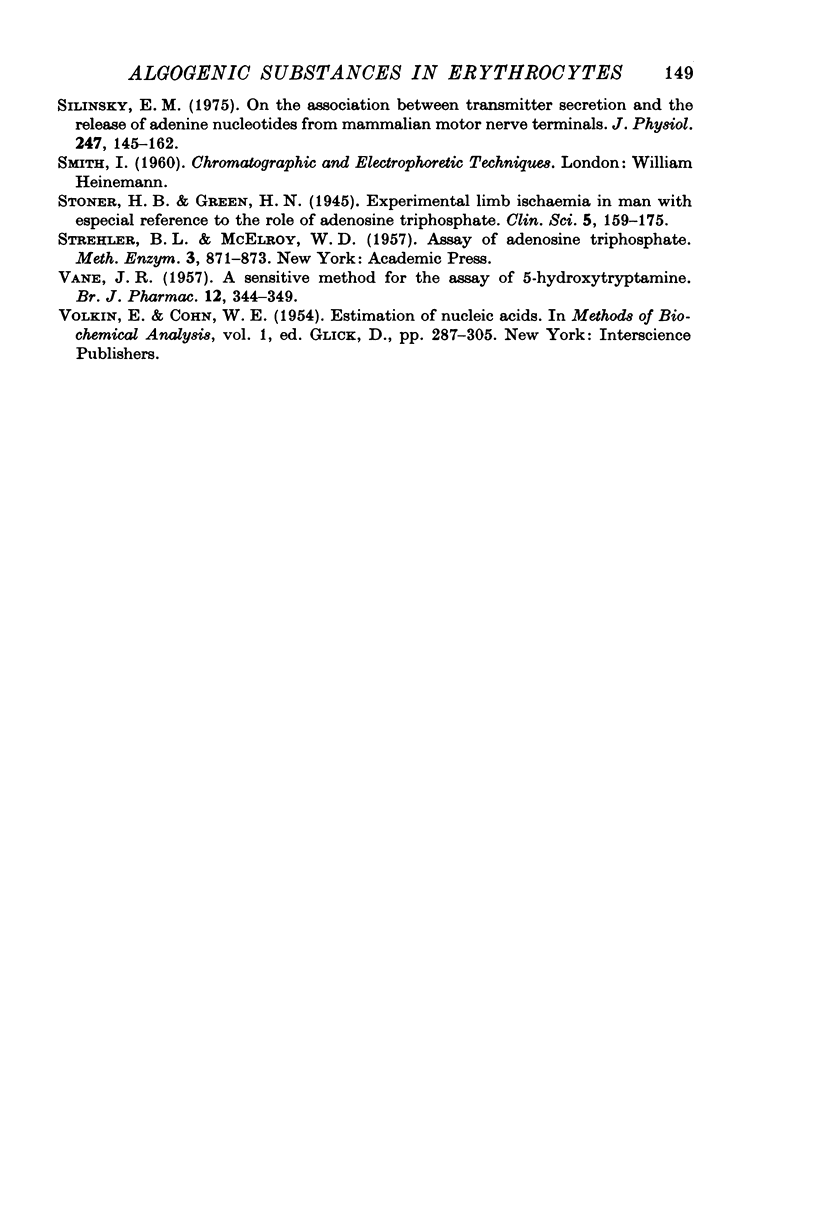
Selected References
These references are in PubMed. This may not be the complete list of references from this article.
- ABOOD L. G., KOKETSU K., MIYAMOTO S. Outflux of various phosphates during membrane depolarization of excitable tissues. Am J Physiol. 1962 Mar;202:469–474. doi: 10.1152/ajplegacy.1962.202.3.469. [DOI] [PubMed] [Google Scholar]
- ARMSTRONG D., DRY R. M. L., KEELE C. A., MARKHAM J. W. Observations on chemical excitants of cutaneous pain in man. J Physiol. 1953 May 28;120(3):326–351. doi: 10.1113/jphysiol.1953.sp004898. [DOI] [PMC free article] [PubMed] [Google Scholar]
- BISHOP C., RANKINE D. M., TALBOTT J. H. The nucleotides in normal human blood. J Biol Chem. 1959 May;234(5):1233–1237. [PubMed] [Google Scholar]
- Barcroft H., Foley T. H., McSwiney R. R. Experiments on the liberation of phosphate from active human muscle, and on the action of phosphate on human blood vessels. J Physiol. 1970 Sep;210(1):34P–35P. [PubMed] [Google Scholar]
- Boyd I. A., Forrester T. The release of adenosine triphosphate from frog skeletal muscle in vitro. J Physiol. 1968 Nov;199(1):115–135. doi: 10.1113/jphysiol.1968.sp008642. [DOI] [PMC free article] [PubMed] [Google Scholar]
- Burnstock G. Purinergic nerves. Pharmacol Rev. 1972 Sep;24(3):509–581. [PubMed] [Google Scholar]
- Collier H. O., James G. W., Schneider C. Antagonism by aspirin and fenamates of bronchoconstriction and nociception induced by adenosine-5'-triphosphate. Nature. 1966 Oct 22;212(5060):411–412. doi: 10.1038/212411a0. [DOI] [PubMed] [Google Scholar]
- Crane R. K. Use of Charcoal to Separate Mixtures of Inorganic, Ester, and Nucleotide Phosphates. Science. 1958 Feb 7;127(3293):285–286. doi: 10.1126/science.127.3293.285. [DOI] [PubMed] [Google Scholar]
- Dern R. J., Brewer G. J., Wiorkowski J. J. Studies on the preservation of human blood. II. The relationship of erythrocyte adenosine triphosphate levels and other in vitro measures to red cell storageability. J Lab Clin Med. 1967 Jun;69(6):968–978. [PubMed] [Google Scholar]
- Forrester T. An estimate of adenosine triphosphate release into the venous effluent from exercising human forearm muscle. J Physiol. 1972 Aug;224(3):611–628. doi: 10.1113/jphysiol.1972.sp009915. [DOI] [PMC free article] [PubMed] [Google Scholar]
- Forrester T., Lind A. R. Identification of adenosine triphosphate in human plasma and the concentration in the venous effluent of forearm muscles before, during and after sustained contractions. J Physiol. 1969 Oct;204(2):347–364. doi: 10.1113/jphysiol.1969.sp008917. [DOI] [PMC free article] [PubMed] [Google Scholar]
- KREBS H. A., HEMS R. Some reactions of adenosine and inosine phosphates in animal tissues. Biochim Biophys Acta. 1953 Sep-Oct;12(1-2):172–180. doi: 10.1016/0006-3002(53)90136-x. [DOI] [PubMed] [Google Scholar]
- KUPERMAN A. S., VOLPERT W. A., OKAMOTO M. RELEASE OF ADENINE NUCLEOTIDE FROM NERVE AXONS. Nature. 1964 Dec 5;204:1000–1001. doi: 10.1038/2041000a0. [DOI] [PubMed] [Google Scholar]
- MANDEL P., CHAMBON P., KARON H., KULIC I., SERTER M. [Free nucleotides in red blood cells and reticulocytes]. Folia Haematol Int Mag Klin Morphol Blutforsch. 1962;78:525–543. [PubMed] [Google Scholar]
- McIlwain H. Regulatory significance of the release and action of adenine derivatives in cerebral systems. Biochem Soc Symp. 1972;(36):69–85. [PubMed] [Google Scholar]
- Parkinson P. I. Proceedings: The effect of graduated exercise on the concentration of adenine nucleotides in plasma. J Physiol. 1973 Oct;234(2):72P–74P. [PubMed] [Google Scholar]
- Rubio R., Berne R. M., Katori M. Release of adenosine in reactive hyperemia of the dog heart. Am J Physiol. 1969 Jan;216(1):56–62. doi: 10.1152/ajplegacy.1969.216.1.56. [DOI] [PubMed] [Google Scholar]
- Scharff O., Vestergaard-Bogind B. Activation by freezing of the adenosine triphosphate-hydrolyzing enzyme system in human red cell membranes. Scand J Clin Lab Invest. 1966;18(1):87–95. doi: 10.3109/00365516609065611. [DOI] [PubMed] [Google Scholar]
- Silinsky E. M. On the association between transmitter secretion and the release of adenine nucleotides from mammalian motor nerve terminals. J Physiol. 1975 May;247(1):145–162. doi: 10.1113/jphysiol.1975.sp010925. [DOI] [PMC free article] [PubMed] [Google Scholar]
- VANE J. R. A sensitive method for the assay of 5-hydroxytryptamine. Br J Pharmacol Chemother. 1957 Sep;12(3):344–349. doi: 10.1111/j.1476-5381.1957.tb00146.x. [DOI] [PMC free article] [PubMed] [Google Scholar]
- VOLKIN E., COHN W. E. Estimation of nucleic acids. Methods Biochem Anal. 1954;1:287–305. doi: 10.1002/9780470110171.ch11. [DOI] [PubMed] [Google Scholar]


